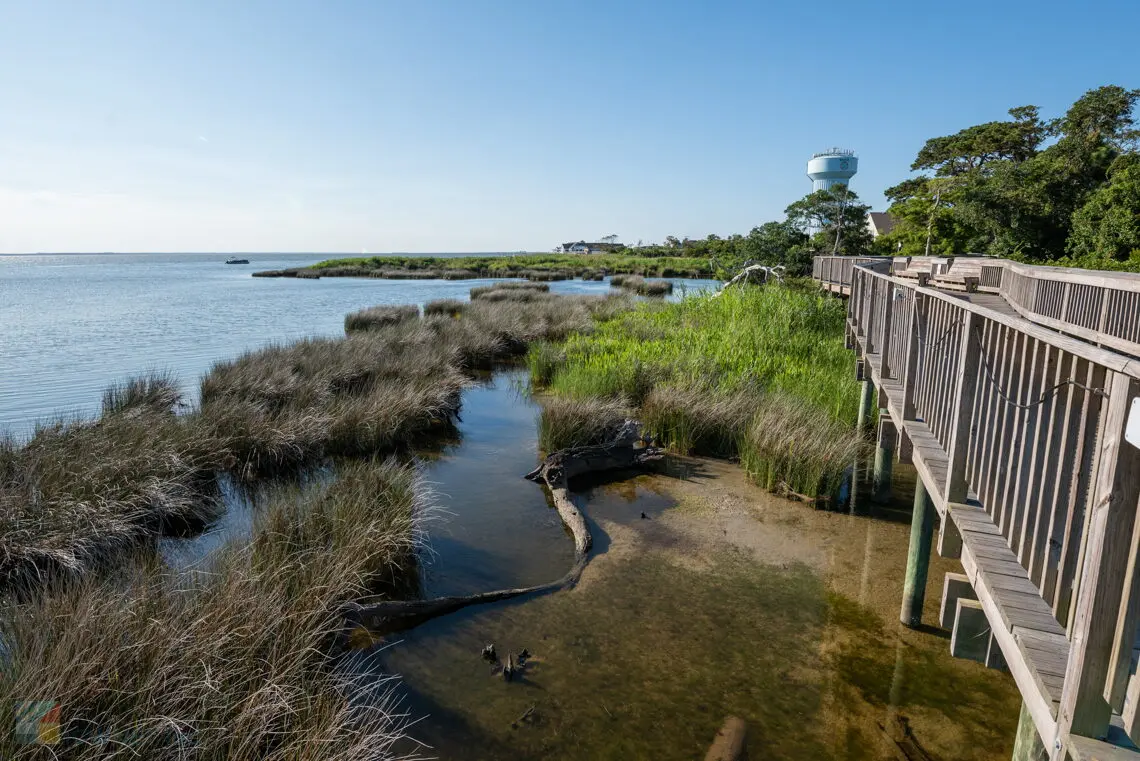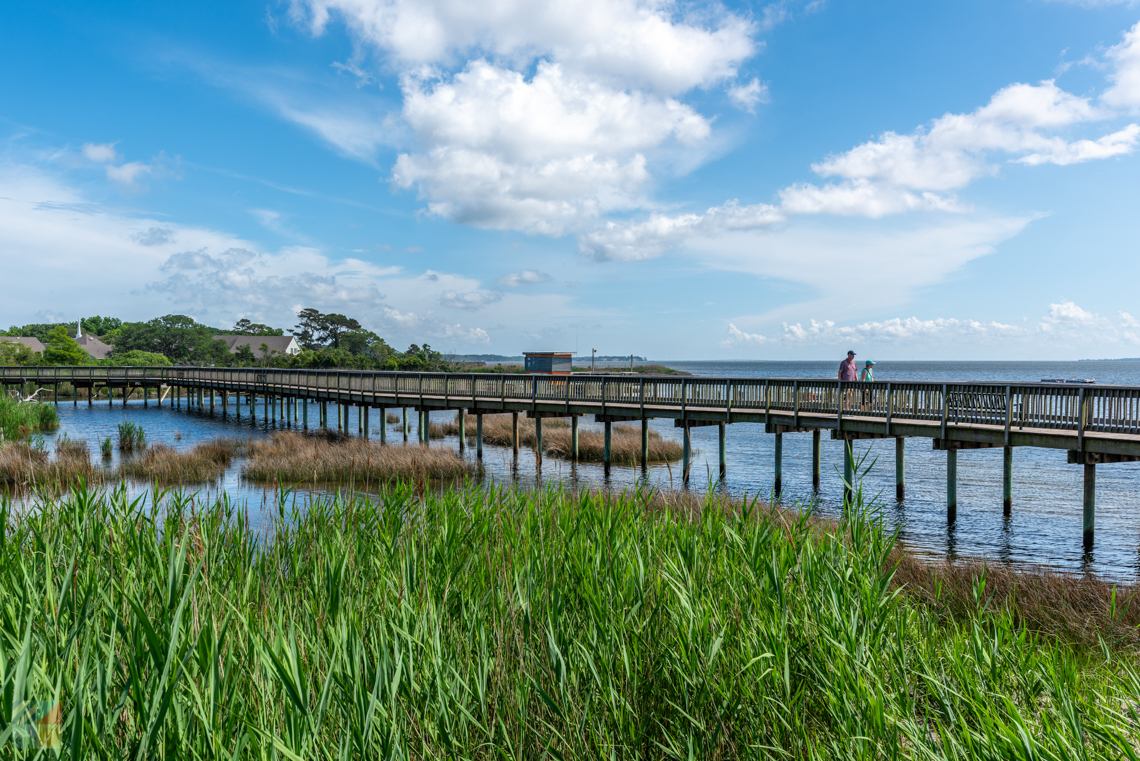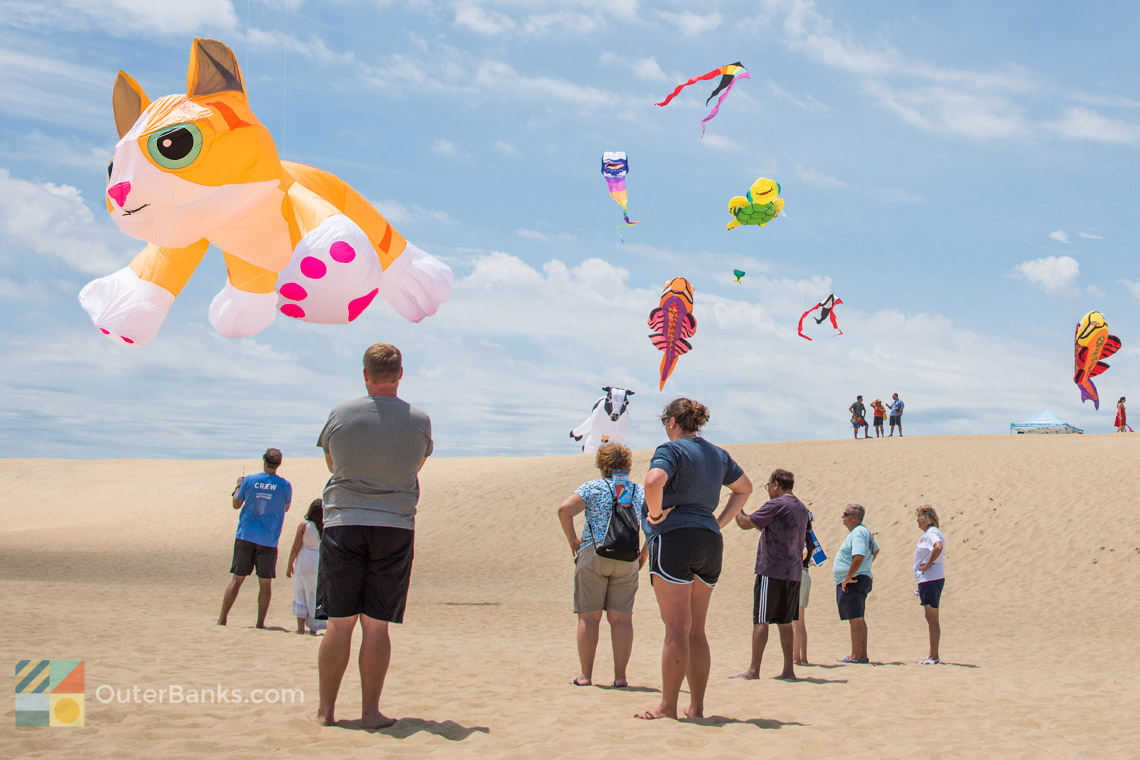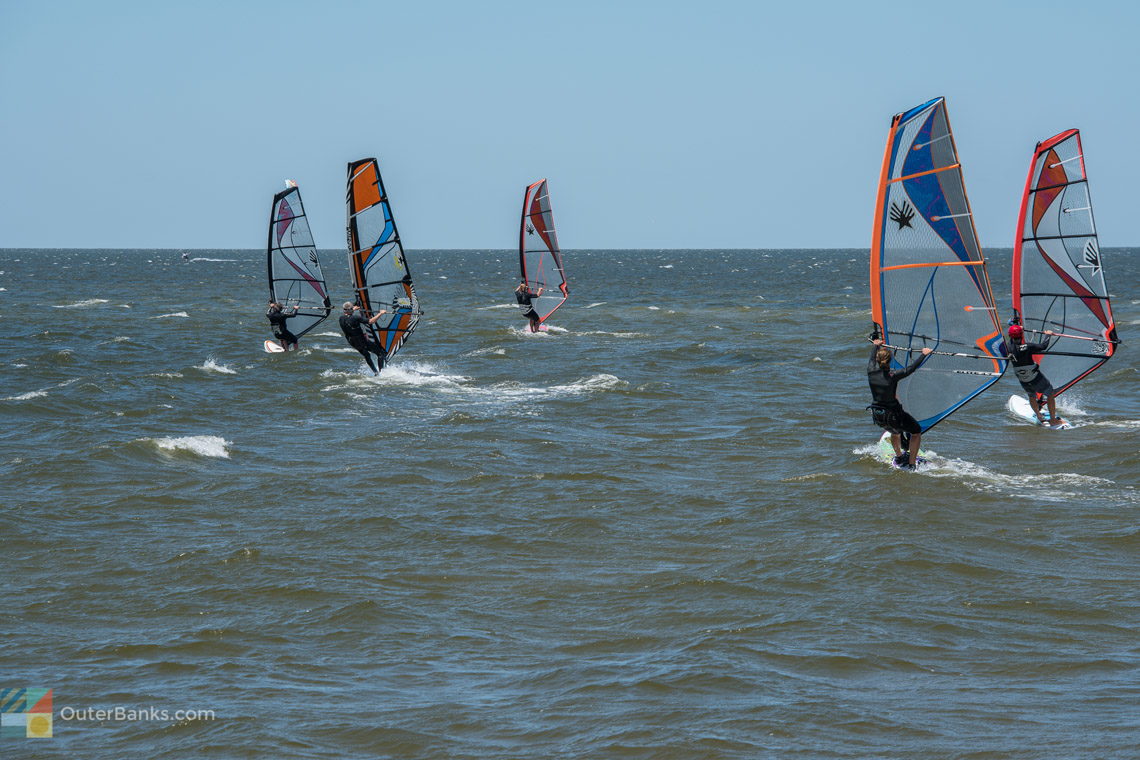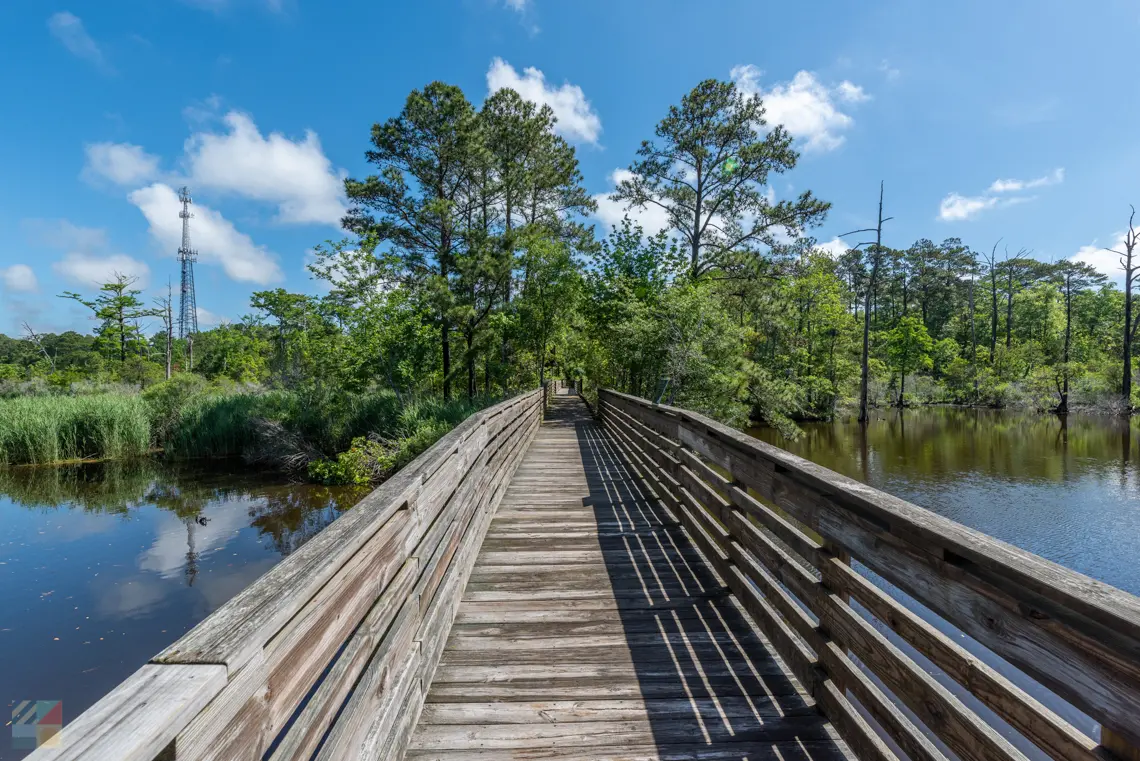The Currituck Sound is a nature lover's playground, offering ample access to wide open spaces of shallow, easy to navigate open water, dense thickets of maritime forest, and small, marshy islands that are covered in wildlife.
There's a reason why some of the Outer Banks' earliest visitors flocked first to the northern beaches of Duck and Corolla. With miles of soundfront providing a comfortable but temporary home to thousands of migrating waterfowl, the landscape proved ideal for adventurous hunters, and provided a gorgeous and wild vacation destination for explorers who liked to escape to a locale well off the beaten path.
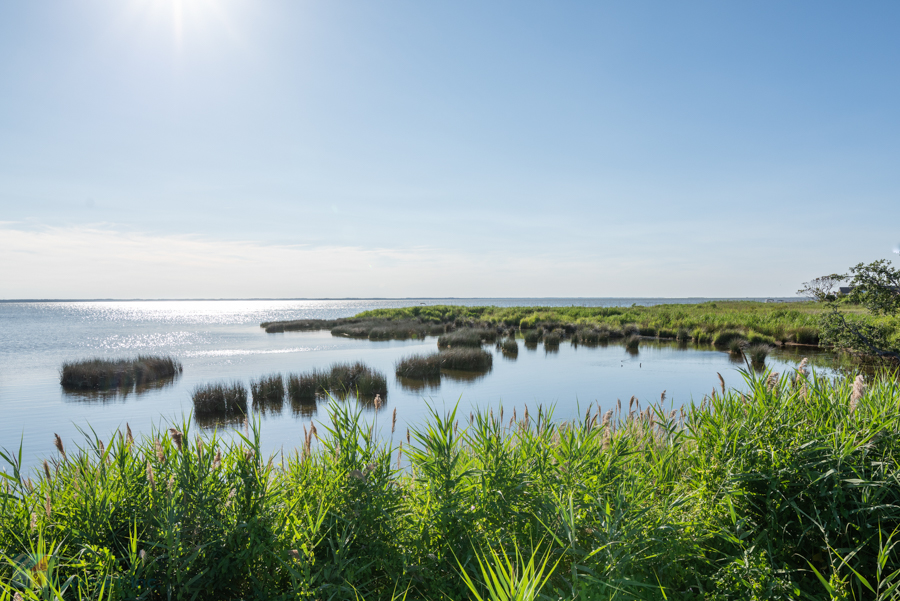
Today, the Currituck Sound is just as wild as it was 100 years ago, with miles of terrain to explore from Southern Shores to the Virginia border, and plenty of locally owned companies that are happy to give newcomers a guiding hand. On your next Outer Banks vacation, grab a kayak, a skiff, or a sturdy pair of flip flops, and embark on your own Currituck Sound explorations. With some of the most wildly beautiful vistas on the northern Outer Banks, (also known as the Currituck Banks), a visit to the Currituck Sound is an ideal way to get your feet wet in the local wildlife scene.
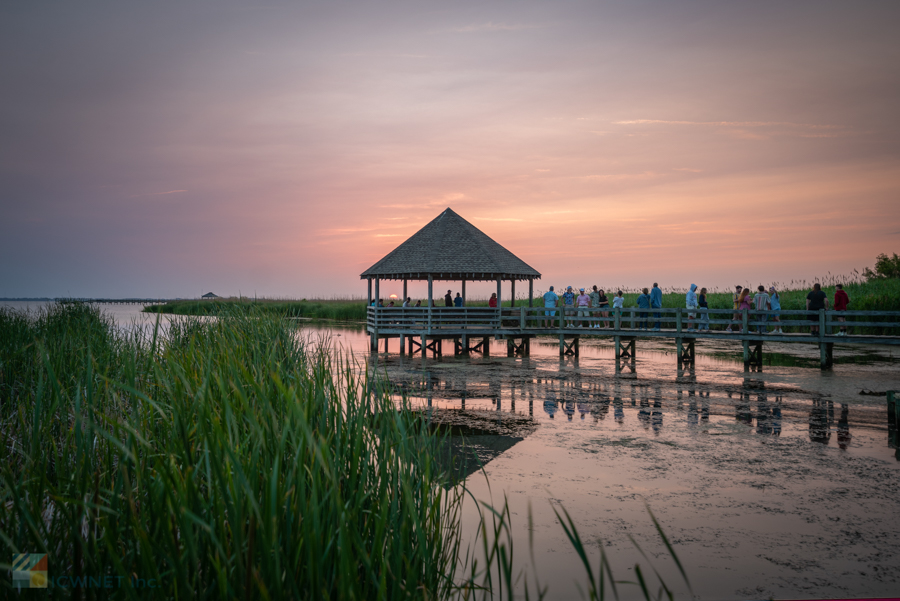
History of the Currituck Sound
Well before thousands of vacationers headed to the Outer Banks for a fantastic vacation, the Currituck Sound was one of the few attractions for out-of-state visitors along the coast of North Carolina. The area was well-known among high class New England and New York aristocrats as a fantastic location for adventurous duck hunting and fishing, and rustic but exquisitely regal hunt clubs popped up along the Northern Outer Banks well before the rest of the Outer Banks were receiving frequent vacationers.
In fact, by the 1920s, one such club, the Whalehead in Historic Corolla, was already gaining national recognition as one of the most distinguished wilderness retreats ever built, a distinction that carries on today as the Whalehead in Historic Corolla is still open to awed visitors who marvel at its grandeur, its rows of rooftop windows, and its light lemon yellow exterior (a replication of the original color.)
The reason for this fantastic hunting and fishing was simple. The Currituck Sound bordered, (and still does), acres of undisturbed marshlands, maritime forests, and undisrupted landscape where wildlife could flourish.
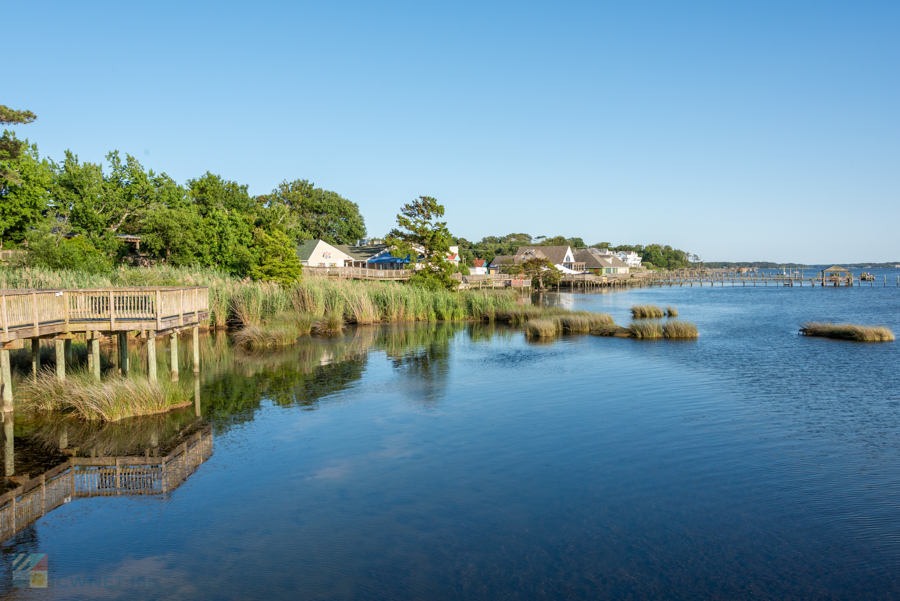
In addition, this sound was one of the few sounds along the East Coast that wasn't primarily a saltwater environment. As the inlets bordering the central Outer Banks closed up during the past few centuries, the salinity of the Currituck Sound dwindled. In fact, since the late 1700s, the only connection this sound has with the ocean is via the Oregon Inlet, located a good 40 miles south of Corolla. Because of this distinction, a number of species that aren't normally accustomed to a salty environment were able to thrive, enticing fishermen and hunters even more.
In the ensuing decades since the heyday of the 1920s hunt clubs, Corolla and the Outer Banks areas bordering the Currituck Sound, (specifically Duck and Southern Shores), enjoyed a slow expansion of tourism, mainly originating from those early legendary fishing and hunting expeditions which were still circulated stories among the northeast upper class.
This all changed in the 1970s and 1980s when NC Highway 12 was paved, and provided a viable means of transportation from the central Outer Banks all the way to the northern borders of the Currituck Banks. Soon, the northern Outer Banks as well as the borders of the Currituck Sound experienced a rush of visitors eager to discover the uncrowded beaches and natural wildlife that had drawn visitors half a century ago.
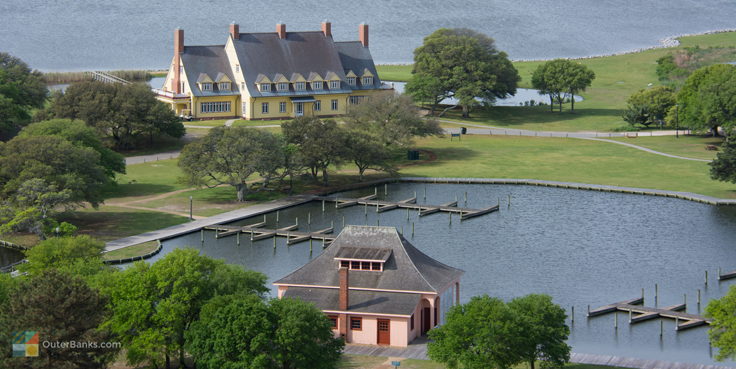
As a result of this boost in tourism, portions of Corolla and Carova bordering the Currituck Sound were sectioned off to ensure that soundfront regions would never be developed and would remain a safe haven for migrating waterfowl, as well as the regular species who called this delicate, partially-saltwater environment home. These parcels included the Currituck Banks National Estuarine Preserve, the Currituck National Wildlife Refuge, and the Mackey's Island National Wildlife Refuge, which is one of the largest areas of land in the Currituck Sound, located in between the North Carolina mainland and the Currituck Banks.
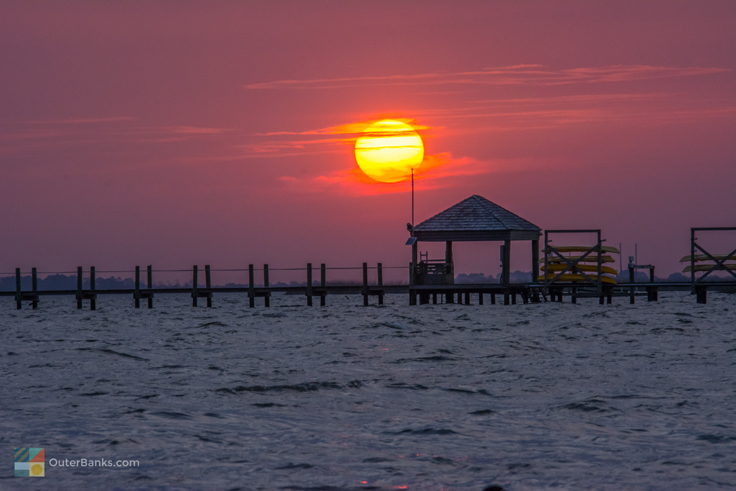
All of these land grants and designations took place in the early to mid-1980s, and as a result, portions of soundfront facing landscape remained, and still remain, undeveloped. In fact, plans were originally made to expand NC Highway 12 from Carova and the surrounding 4WD accessible villages all the way north to the Virginia border, but because of these natural reserves created to preserve the fragile Currituck Sound and beach environments, those plans were subsequently scrapped, and even today, visitors still cannot visit those areas without a 4WD vehicle and a long trek along the sandy beach.
In recent years, the Currituck Sound, which has always been known as peaceful retreat, has garnered a little controversy as plans have been debated for a "Mid-Currituck Bridge" which would span across the Currituck Sound from the North Carolina mainland to the northern Outer Banks.
The proposed 7 mile long toll bridge would begin in the community of Aydlett, and would deposit visitors just south of Corolla, providing easy access to all northern Outer Banks beach towns, including Corolla, Carova, Duck and even Southern Shores.
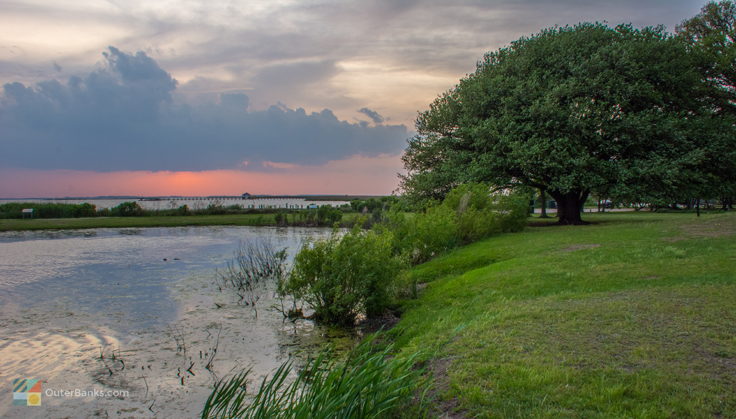
The concept for the Mid-Currituck Bridge stemmed from a rise in tourism in the 1990s and 2000s. As more visitors flocked to the northern beaches, the two-lane NC Highway 12 experienced regular weekend back-ups, with the trip from mainland Currituck around the Currituck Sound to the neighboring beaches taking anywhere from 30 minutes to an hour or more.
Opponents to the Mid-Currituck Bridge worry that the bridge will lead to a greater influx of tourism and development, spoiling the natural landscape that attracted visitors in the first place. Proponents attest that an easier route to the northern Outer Banks has been necessary for some time, and the ease in traffic would affect all visitors coming to the Outer Banks via the Wright Memorial Bridge, the only bridge that allows visitors coming from the north access to the Outer Banks. In addition, an additional bridge would prove helpful during hurricane evacuations, easing traffic along both the Wright Memorial Bridge and US 158.
Currently, the North Carolina Department of Transportation is developing a detailed bridge proposal, and is working with state and federal environmental groups to ensure as little damage to the Currituck Sound as possible. Until the bridge is built, however, visitors will have to enjoy the Currituck Sound the old fashioned way: either by a soundside hike along the barrier islands of the Currituck Banks or along the Currituck County mainland, or via a kayak or boat trip along the seemingly endless open waters.
While the landscapes bordering the Currituck Sound may have changed, with more developments sprouting up on both sides of the water, the desolation and rustic feel of the soundside areas remain the same, with countless marshy islands to explore, and a small but expansive handful of preserves or wildlife refuges to ensure that sections of this body of water will always remain completely wild.
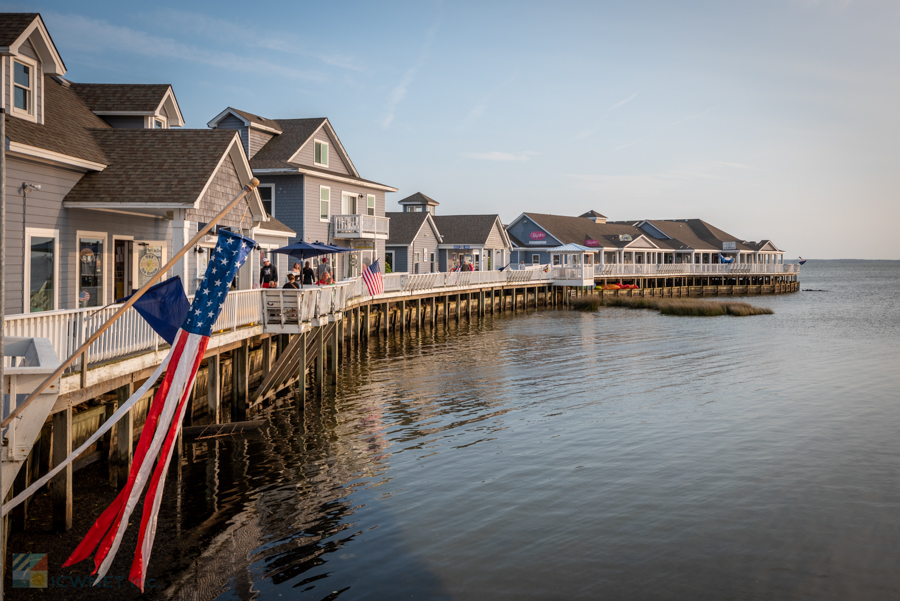
Geography and Wildlife of the Currituck Sound
The Currituck Sound connects with the Albemarle Sound, which borders the central Outer Banks, at around Southern Shores, and continues north until Virginia, where it meets Norfolk and Virginia Beach's Back Bay.
Essentially, the sound ranges from 3-8 miles wide, but is good 30 miles long, extending well into the state of Virginia. Because of its narrow nature, and expansive length, visitors and residents of Virginia Beach, the northern Outer Banks, and everywhere in between essentially have fantastic boating access to the wide open waters of the Currituck Sound.
As mentioned, the Currituck Sound is miles away from the nearest ocean inlet, which has created a nearly-freshwater, and quite shallow environment. Even a rough oceanside gust will have minimal effect on the sound, making it an ideal playground for casual kayakers, jet-skiers, parasailers, windsurfers and even beginning kiteboarders. The waters here remain generally calm, and somewhat protected from any stormy ocean conditions.
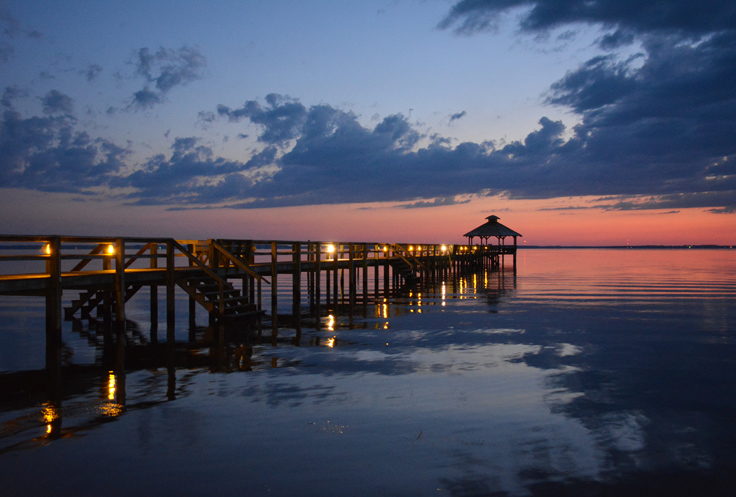
The gradual removal from the regular integration of ocean waters has also created a series of islands throughout the sound. Most of these are unnamed parcels of marshlands with little ground to stand on, and are best explored by a kayak or small skiff. Though located just off the soundside coast of either the Currituck Banks or the mainland, these regions are nevertheless tricky treks on foot, with a bit of wading and sloshing through dense marshlands required for access.
One of the most notable parcels of land within the Currituck Sound is Knotts Island, which is home to the Mackay Island National Wildlife Refuge, and is a veritable fully-functioning island community within the Currituck Sound, with several hundred residents and gorgeous waterfront views around every turn.
The only way to access Knotts Island is via the Knotts Island ferry, (also known as the Currituck Sound ferry), which is free to all visitors, and lasts just 45 minutes as it trucks 5 miles across the sound to the borders of Knotts Island. The ferry runs five times a day from both the mainland and the borders of Knotts Island, and is available seven days a week. Outer Banks visitors who want an in-depth tour of the Mackay Island Refuge and a panoramic view of the sound will find no better way to discover this quietly undeveloped and relatively undiscovered portion of the Outer Banks than a day trip via the Knotts Island ferry.
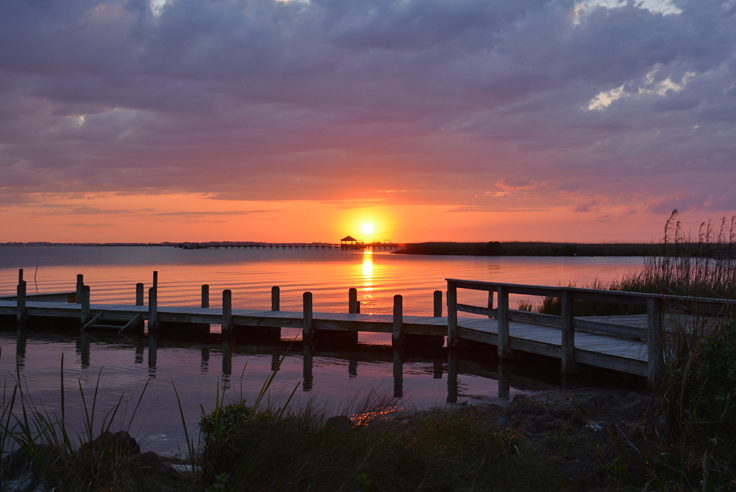
As noted, the biggest attraction of the Currituck Sound is the wildlife, and the borders of the Currituck Sound, both along the mainland communities and the northern Outer Banks, have this amenity in spades.
Between the small, marshy islands that lay just off the soundside beaches, and the parcels of maritime forest that are yards away from the shoreline, the Currituck Sound offers an abundance of both full-time and part-time native residents, that can be spotted and admired from virtually any spot along the sound's perimeters.
As an essential spot along the "Atlantic Flyway," the undefined route that migrating species take along the East Coast from the north to the south and back, the parcels of marshes and forests along the sound are essential temporary habitats for a number of migrating waterfowl, including Canadian geese, ducks, swans, and even egrets and herons.
The wooded portions along the Currituck Sounds' borders also attract a number of full-time mammals, including otters and nutrias, which flock to the marshy areas bordering the sound, as well as white tailed deer, raccoon, rabbits and even squirrels, which can be found in deeper patches of the maritime woods.
Fishing along the Currituck Sound is also exceptional, and the area produces a number of tasty freshwater catches, including bass and catfish. Anglers are encouraged to take out a small skiff or kayak and head to the open Currituck Sound waters for their best chance of landing a good catch or two.
Regardless of how you head to the Currituck Sound, visitors will find the options for visiting this 30-mile long parcel of water virtually endless. In addition, almost every scenic stretch of mainland US 158 or Currituck Banks' NC Highway 12 offers distant views of the sound, making a Currituck Sound sighting even easier. Whether you are hitting the water in southern Virginia or taking a stroll in soundfront Corolla, the Currituck Sound is only yards away, and is just waiting to be explored.
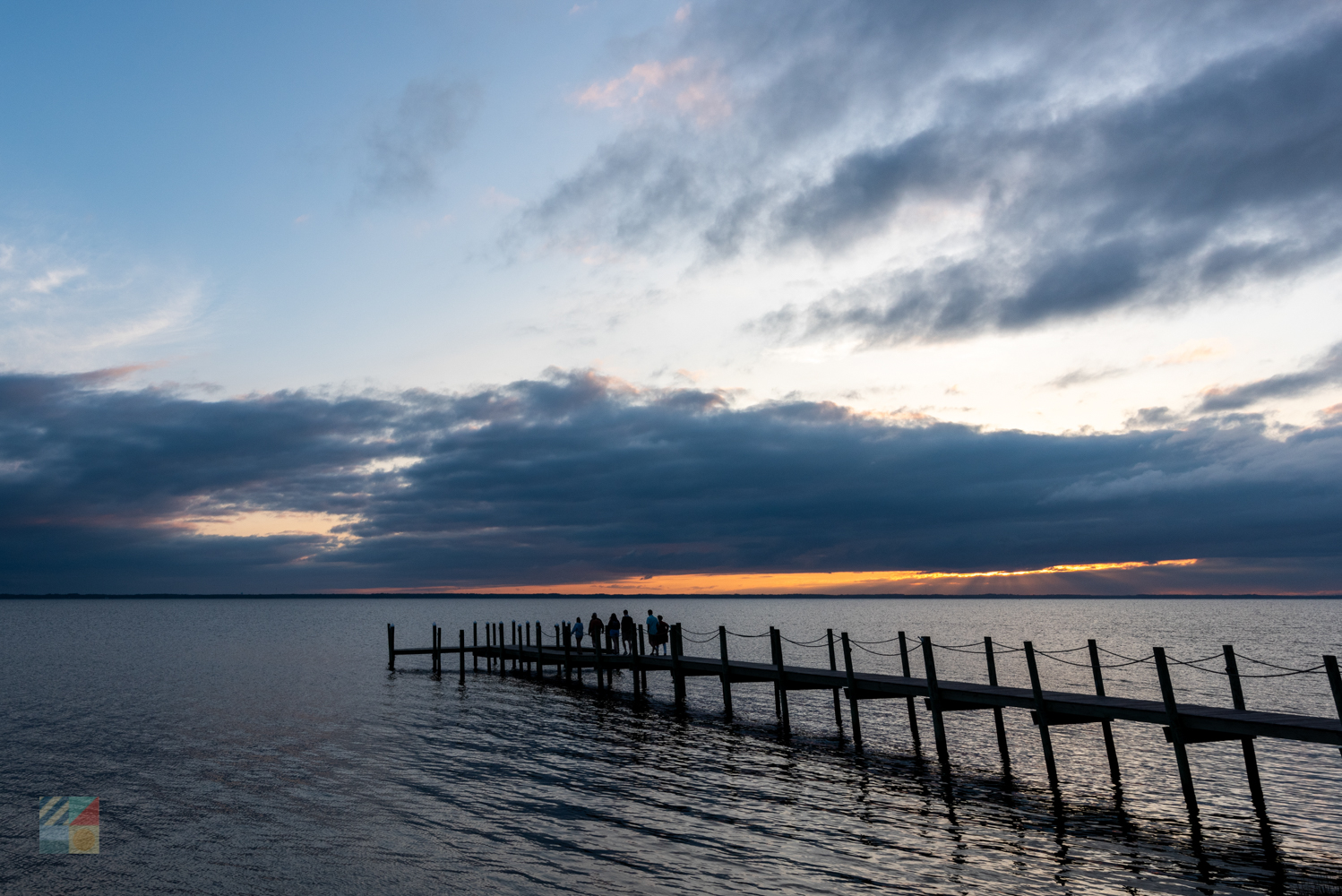
Visiting the Currituck Sound
There are a number of ways to explore the Currituck Sound, ranging from on-foot adventures to guided tours, and everything in between.
The best way to enjoy a sound visit is by heading to the northern Outer Banks' biggest attractions, specially the Whalehead in Historic Corolla and neighboring Currituck Beach Lighthouse, or the Duck Town Park. Both of these locales offer acres of land bordering the soundfront, as well as scenic nature trails ad boardwalks that lead visitors from the outskirts of the maritime forests to the very borders of the soundfront. Ideal for birders and folks who want a quick and gorgeously scenic tour of the sound, a walking trail through the Currituck beaches is an easy way to take in the beauty of the Currituck Sound with just a little bit of enjoyable effort.
Visitors who love a great outdoors adventure will be delighted to find that a number of watersports companies along the northern Outer Banks also offer scenic waterfront tours of the Currituck Sound. These adventures can take place in a number of mediums, from small boat tours to parasailing adventures, and launch regularly in season from the soundside shores of Duck or Corolla.
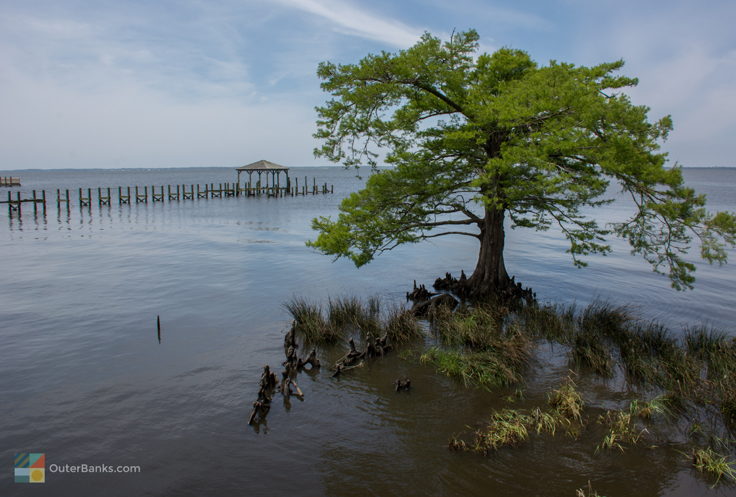
For a true natural exploration, book a kayak tour of the Currituck Sound, offered by a number of local watersports companies, including the regional chain Kitty Hawk Kites. This tour will take you deep into the open waters of the sound, bordering beautiful marshy islands, and featuring endless views of the open water and the wildlife that calls it home. Generally seasonal and lasting between 2-3 hours, a scenic nature tour through the Currituck Sound is an ideal way to explore these open waters for visitors of all ages.
For an adventure that's a little more thrilling, consider booking a soundside charter, available along the mainland, or simply take the boat out to the water via a number of public boat ramps available throughout the communities bordering the Currituck Sound. An open water exploration is an ideal way to explore the miles of water, islands, and brushy borders, and is also a great way to get to some of the most secretive and coveted fishing holes in between. Local businesses on both sides of the Currituck Sound, like Corolla Bait & Tackle, are happy to take visitors out on skiffs or pontoon boats to explore the waters, and find some of the best crabbing and fishing holes along the way.
Finally, visitors who want a panoramic view of the sound can hop aboard a vehicular ferry to Knotts Island. This island is essentially part residential community, and part nature reserve, and as a result offers some pristine and undisturbed views of the open waters. For a day trip that's simply relaxing and uncluttered, consider a trip to Knotts Island and Mackay Island National Wildlife Refuge. Completely wild and relatively undiscovered, a day trip to this region of the Outer Banks will be a truly wild and natural adventure.
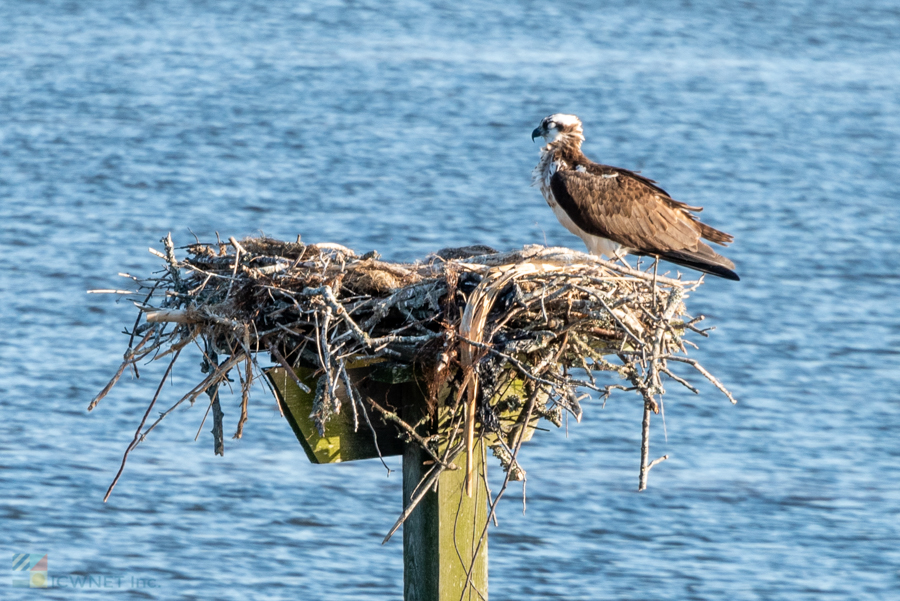
Tips and Trips for Visiting the Currituck Sound
- If you're planning a day trip to Knotts Island, keep your eye on the summer and fall months. Knotts Island has a vineyard, gift shop, and even an annual peach festival, making it a fantastic day trip for in-season Outer Banks travelers. That being said, exploring the Mackay Island National Wildlife Refuge, which is located on Knotts Island, is a fun off-season adventure, as the marshy environment is free of mosquitos, and the temperate climate is perfect for avid hikers.
- If you're planning a guided boat or kayak tour during your Currituck Sound visit, be sure and book as far in advance as possible. The watersports companies that operate out of Duck and Corolla have a tendency to fill up quickly, especially in the busy months of June, July and August, when Outer Banks visitation is at its peak. Many watersports companies allow online reservations, or you can simply call ahead and see what Currituck Sound excursions are available during your upcoming vacation.
- For a completely free and completely scenic self-guided tour of the Currituck Sound, head to the reserves. Both the Currituck Banks Coastal Estuarine Reserve and the Currituck National Wildlife Refuge feature secluded nature trails that wind through the maritime forests towards the soundfront. Additional easier nature trails can be found by the Whalehead in Historic Corolla and the Duck Town Park, allowing visitors easy access to some of the most scenic waterfront sunsets on the northern Outer Banks.
- Speaking of waterfront sunsets, perhaps the best avenue for effortlessly enjoying the open waters of the Currituck Sound is via a round of cocktails or a five star meal at one of the northern Outer Banks' many waterfront restaurants. These establishments are located throughout Duck and Corolla, and may even offer dock-front seating for folks who want to be right on top of the water, or who are just pulling ashore on a boat for a quick bite. Ideal around sunset, a romantic Currituck Soundfront meal is the perfect way to spend a quiet and completely enjoyable evening during your vacation.
The Currituck Sound is a longstanding attraction to Outer Banks visitors, beginning with the adventurous elite vacationers who arrived in the early 20th century as part of a new generation of rustic hunt clubs. Today, the sound can be enjoyed by virtually everyone who makes a trip to the Currituck mainland or the northern Outer Banks, as the 30 mile expanse of water is easy to access from most any vantage point.
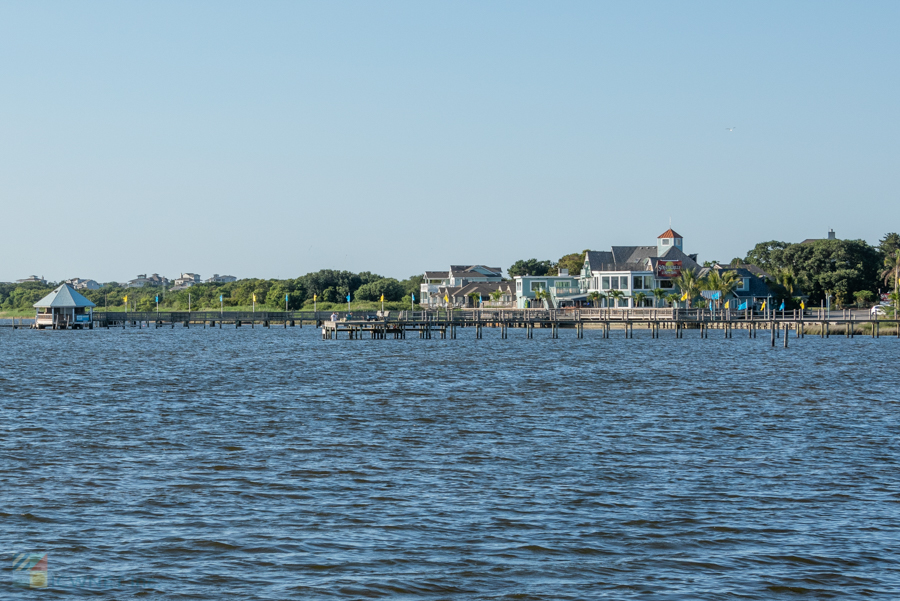
For a rustic waterfront tour through patches of marshy islands and shallow open waters, or a scenic nature trail that leads you to a wide open view of the Outer Banks' natural landscape at its best, plan a visit to the Currituck Sound. With miles of virtually unchartered territory to explore, the Currituck Sound is a North Carolina destination that is certainly on the map, but well off the beaten path.
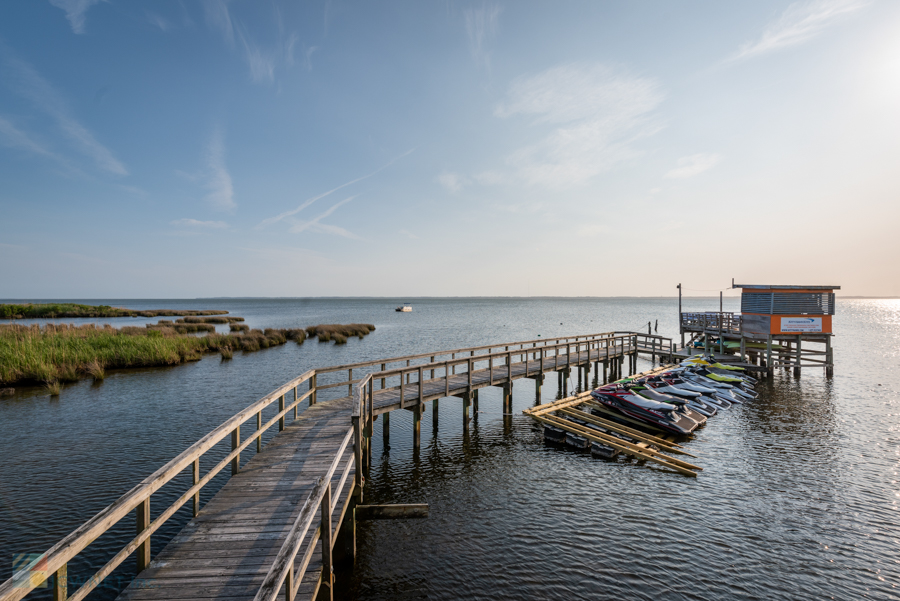
-
OBX Wedding Fest
January 16th, 2026 - January 18th, 2026 -
Hatteras Island Oyster Roast
February 7th, 2026 1:00 PM - 4:00 PM -
First Friday in Manteo
March 6th, 2026 6:00 PM - 8:00 PM
Rustic waterfront pub at a fishing pier with a large deck for seafood eats, draft beer & live music. Fish Heads Bar and Grill is THE tiki bar of the Outer Banks. Located at Mile Post 18.5 in Nags Head, we offer a view that is second to none...
When most Outer Banks visitors think of Nags Head, they imagine a classic beach town filled with warm sunny days, crashing ocean waves, and miles of beaches, shops, restaurants and all the attractions that inherently come standard with an...
Founded in 1984 on the coast of the Outer Banks, NC, Farmer’s Daughter still remains a destination for people wanting great quality, outstanding selection of unique clothing, accessories, and gifts at affordable prices. Committed to offering...
While several of the Outer Banks' most popular sports seemingly flew onto the scene in the past decade or two, like kiteboarding or stand up paddle boarding (SUP), windsurfing has been drawing water sports lovers to the North Carolina coast for...
You haven’t experienced North Carolina until you’ve experienced North Carolina BBQ, and Pigman’s Bar-B-Que offers excellent North Carolina BBQ meals served with southern hospitality. Pigman’s offers traditional eastern...
The prestigious Whalehead in Historic Corolla has been a dominant attraction to Corolla visitors since it was renovated and opened to the public in 2002. As part of the Historic Corolla Park, the Whalehead in Historic Corolla serves as a northern...
Since 2005, Outer Banks Blue has delivered exceptional vacations for OBX visitors. Our family-owned and locally managed rental company focuses on service and promises “a relaxing experience with a local touch.” Turn your dream vacation...
The Southern Outer Banks, particularly Ocracoke Island, is notorious as the stomping grounds for some of history's most infamous pirates. Notable swashbucklers from Calico Jack to Anne Bonney and Mary Reed, arguably the most famous women pirates...
The Ultimate Go Kart Racetrack That Kids and Adults will Enjoy! Corolla Raceway is the premier Go-Kart experience. Our upscale facility is designed to provide a first class entertainment experience. Corolla Raceway provides the newest Single...
Most all visitors to Corolla will spend at least a sunny afternoon or two at the Historic Corolla Park. This 39 acre site is home to three of the Northern Outer Banks' biggest attractions, the Whalehead in Historic Corolla, the Currituck Beach...
Shelling, Snorkeling, Paddle Boarding, Eco Tours & Light Fishing. Guided family adventure trips on Hatteras Island, NC. We take your group to multiple tidal islands along the Cape Hatteras seaside. These islands are constantly changing and...
Take a day trip or an afternoon off the beach to explore the heart of Historic Corolla Park, and you’ll find one of the Outer Banks’ newest and most noteworthy attractions, the Currituck Maritime Museum.
Check out Corolla's newest 5-star attraction! Pirate-Themed 18-Hole Minature Golf Course and Arcade with waterfalls, a pirate ship, caves, skulls, and more! So much fun for the whole family! Come...
Sandy Run Park leads its visitors through the heart of Kitty Hawk Woods Coastal Preserve, one of the largest maritime forests remaining in North Carolina. Completed in two phases, the park now encompasses 1600 acres of marshland, waterways and...
